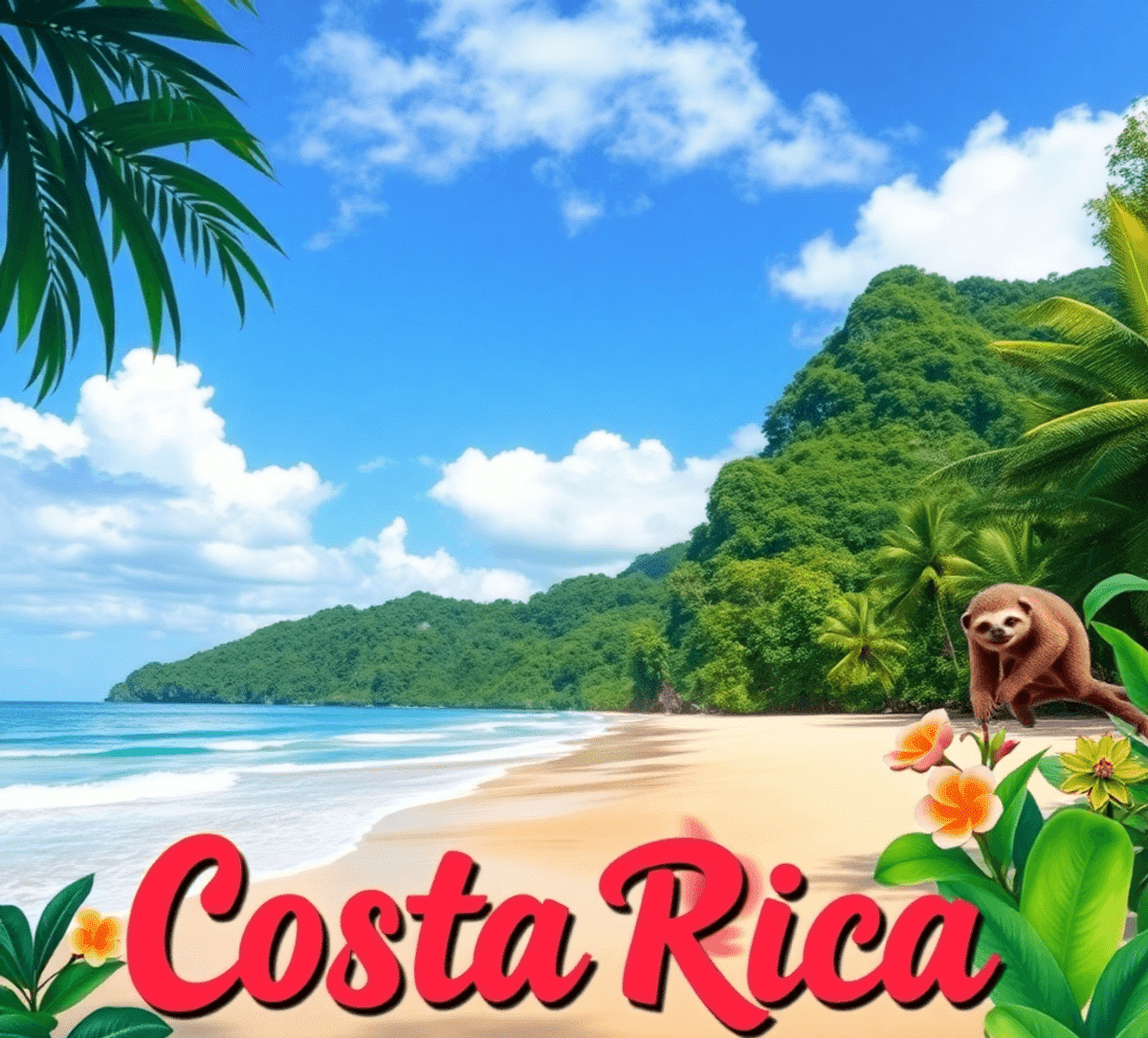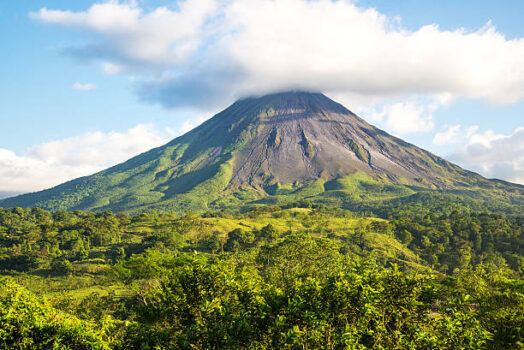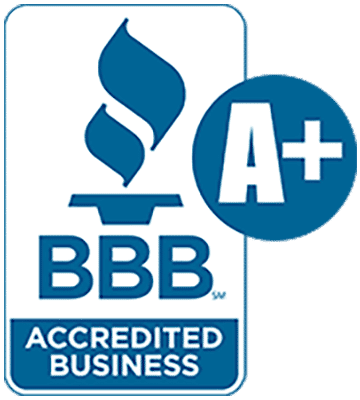Contributed by Ashley McKeown
So you just graduated from college and you’re on your way to Costa Rica to teach or work? You’re in luck! Welcome to my three-part blog: Everything You Need to Know About Moving to Costa Rica (Specifically, San Jose).
Part Three: Moving to Costa Rica (San Jose)
This blog post is primarily aimed at young adults thinking about moving to the Central Valley to teach or work. I offer advice on everything from making the decision to move to packing to shopping for furniture. I moved to San Jose, Costa Rica 3 months after I graduated from college in 2016. I had a job lined up when I moved, but it’s not totally necessary. Many teachers I met took a TEFL course in Manuel Antonio/at a beach before moving to San Jose to find a job. It’s a good option, although rather expensive.
All of my advice is based on my experiences, or the experiences of friends who went through similar situations. I’ve split the blog into three parts: Getting Ready to Move to Costa Rica, Moving to Costa Rica 1 & 2.
Below you will find information on: 
- Going to doctor in San Jose
- Public transportation in San Jose
- Shopping (Clothes, apartment items, groceries)
- Going out in San Jose
In Part One: Getting Ready to Move to Costa Rica, you’ll find information on:
- Deciding to Move to Costa Rica
- Packing
- Money/Budgeting
- Arriving in Costa Rica (Airport/Customs)
In Part Two: Moving to Costa Rica, you’ll find information on:
- Finding an Apartment
- Using your cell phone in Costa Rica
- Helpful Spanish Phrases
- Costa Rica safety tips
Going to the Doctor in San Jose, Costa Rica (As a foreigner)
*In case of medical emergency, call 911*
 If you’re moving to San Jose for more than a couple months, there is a good chance that you’ll need to see a doctor at some point. You should also be ready to get sick a bit more often than you might at home. According to the doctor I saw, it’s pretty normal for foreigners to get sick more often in Costa Rica (or any foreign country really) because they aren’t used to the climate or the germs.
If you’re moving to San Jose for more than a couple months, there is a good chance that you’ll need to see a doctor at some point. You should also be ready to get sick a bit more often than you might at home. According to the doctor I saw, it’s pretty normal for foreigners to get sick more often in Costa Rica (or any foreign country really) because they aren’t used to the climate or the germs.
I have found this to be completely, utterly true. Since I moved here I’ve had several colds, 2-3 sinus infections, a throat infection, the flu (3 times) and, unfortunately, mono. I’ve also had a few migraines. Luckily, the pharmacies here offer a lot of medicine over the counter so I didn’t have to go to the doctor every time I was sick. Many pharmacies even have a doctor working there so you can ask to talk to him/her. I also worked at a company that brought a doctor once a week so I was able to set up an appointment with him rather than go to a clinic.
Note that you can find English-speaking doctors and medical staff fairly easily, so don’t worry too much if your Spanish isn’t great.
You also do NOT need to be a resident or have a Costa Rican ID (cédula) to be treated in Costa Rica. They will treat you no matter what. Depending on where you go you might have to wait longer or pay more.
If you are working legally, the Caja Costarricence de Seguro Social (CCSS) will provide you medical care for “free.” They will take about 10% of your monthly paycheck (and almost 30% from your boss), but when you go to the doctor you won’t be charged anything, no matter what. You might have to wait for a long time to be seen though.
Below I describe what I know about going to the doctor in Costa Rica based on my experience, my friend’s experiences and my own research.
Emergencies
Emergency rooms in San Jose are similar to those in other Western countries. They are open 24 hours a day and offer normal services.
Note that unless it’s a real life-threatening emergency, you are going to be waiting in line for a LONG time. Plan on spending half to a full day unless you’re bleeding/actively dying. It is not a great system. If you want to be seen, be ready to go in and be aggressive when you talk to the people working there. It’s not uncommon for you to fight with people and/or yell at them so they move faster. INSIST that you need to be seen. I am neither rude nor confrontational, so I have a really hard time with this part of living in Costa Rica. Unfortunately, it’s a necessary part about getting things done here sometimes.
Non-emergencies
Clinics
If it’s non-emergent, you’ll get much better service at clinics. Most have emergency services from 7am-10pm. You can also get labs done and talk to general doctors. The Ebais clinics are common clinics that are usually a bit smaller and cater to smaller neighborhoods and towns. It generally costs around 40 USD to visit the clinics.
Tips for visiting clinics:
- Get there early. Like before they open. The lines get very long very quickly.
- BRING YOUR PASSPORT. Not an ID. Your passport.
- If you are pregnant, have asthma, high blood pressure, diabetes or are over 65, tell them so they will attend to you immediately.
- Bring a list of your medications and medical conditions (translated into Spanish, if possible)
Doctores Sin Fronteras
Doctores Sin Fronteras (Doctors without borders) is a good clinic to visit, especially if you are not insured. It’s meant for low-income patients so it’s pretty cheap. I went one time when I had a horrible throat infection. I called and made an appointment the day before. When I showed up I only had to wait a few minutes before the doctor was ready. He did a quick exam and then prescribed me with antibiotics. I paid when I left. It was really cheap (around 11,000 colones, if I remember correctly).
Private Hospitals and Clinics
The best service you’ll find is at private hospitals and clinics like Clínica Biblica or Cima. It is more expensive, but you’ll be seen faster.
Health Insurance
If you’re planning on living in Costa Rica for a while, it is worth it to either get separate travel insurance and/or make sure you have the appropriate coverage on your regular insurance. Oftentimes your primary insurance will cover any medical costs, meaning you can afford to go to private hospitals and clinics.
Pharmacies
I love pharmacies in Costa Rica. You can get a lot of different types of medicine straight over the counter that you can only get with a prescription in other countries (I.E. migraine  medicine and UTI medicine).
medicine and UTI medicine).
Usually when you go in, you just tell the pharmacist what your symptoms are/what you need specifically. They will probably ask you a couple questions (do you have high blood pressure, are you allergic to anything, do you have diabetes etc.), and they might refer you to the doctor on staff.
There is usually a doctor working there, so you can also ask to talk directly to the doctor. Be prepared to wait in line.
If you’ve never been to a Costa Rica pharmacy before, you’re already sick when you go there, or you don’t speak Spanish, I recommend bringing a friend who knows what they are doing. The pharmacy lines can be tricky to figure out sometimes (first take a ticket, wait for your number to be called, talk to the pharmacist, take another ticket, get your meds, get in line to pay) and if you, let’s say, have a migraine when you go at 5:00pm on a week day, you might be overwhelmed.
One time I went when I had a really high fever and had no idea what was going on. It was only thanks to a friendly security guard that I found my way to the counter.
It’s not always that confusing though, especially if you go at a slow time. I’ve gone in and out in less than 5 minutes.
Public Transportation in San Jose
Public transportation in San Jose has its pros and cons. If you’re coming from a larger metropolitan area in the US or Europe, you might not appreciate San Jose transportation very much. If you are like me and coming from more rural area, it doesn’t seem so bad.
There are 5 ways to get around San Jose: 
- Public Bus
- Train
- Taxi or Uber
- Walking
- Bike
Public Bus
If you’re teaching English in San Jose, get used to the bus and learn to love it because you’ll be on it. All. the. time.
(However, if you can manage to find classes that aren’t far from each other and you don’t mind walking, it is possible to avoid taking that many buses.)
Buses are easy to use and everywhere. They’re cheap (200-500 colones) and will get you next to or within walking distance of basically anywhere.
Tips for using the bus in San Jose
- Don’t stand in between the bars. There are bars in every bus that count you as you in enter, if you stand between them for more than a second it will mess with the count and the driver will get mad at you.
- Don’t pay with large bills (10K+). Drivers will accept bills if you have no other choice, but they aren’t very friendly about it.
- Don’t be scared to ask where a bus goes. Better to ask then to get lost. (a lesson learned the hard way).
- Look for the stop button or cord when you get on. It’s nice to know where it is in case you need to press/pull it quickly.
- Watch your belongings. Keep your valuables in your hands. If someone gets on the bus and makes a big show about dropping something, grab tight to your stuff and be wary about helping them (I mean, unless it’s an old lady, then you should probably help her).
- Don’t sit in the handicapped spots. They’re usually close to the front and a different color.
- Don’t take the Periferica if you can help it. Slowest bus in the history of all buses.
Tren Urbano de Costa Rica (Train)
To be honest I’ve never had to take the train. I know that a lot of people take it when they need to go from San Jose to Cartago or Heredia. It also goes to Curridabat, Pavas and Belen.
You can look up the train schedule on their website.
There are major stops close to La California and Parque Central, and in San Pedro close to the UCR.
Taxi and Uber
Both taxi and Uber are quick and easy ways to get around. I prefer Uber because it’s cheaper and safer.
Tips for using Taxis 
- Only use official RED taxis with a YELLOW triangle
- Make sure they are using the meter (‘la maría”)
- Try to be confident about where you’re going and how to get there. Or at least pretend to be.
- Have cash. Some will accept card, but not very many. (“Se acepta tarjeta?” Do you accept card?)
- Don’t talk about Uber around taxi drivers, it’s a sensitive subject
Tips for using Uber
- Try not to order your Uber in front of a line of taxis. Taxi vs Uber is a heated debate within San Jose and taxi drivers have been known to vandalize and threaten Uber cars/drivers.
Biking in San Jose
Biking in San Jose is doable…but it is also quite dangerous. Drivers and motorcyclists don’t pay that much attention to cyclists, there are not very many bike lanes and the infrastructure is really bad so you have to ride on the road.
Wear a helmet and reflective vest at all times and never forget your bike lock.
Walking
I walk as much as I can. It’s great exercise and often faster during rush hour when the streets are packed.
Tips for Walking around San Jose
- Know the neighborhood before you walk there. It’s easy to stumble across a sketchy street where Uber would be better. Ask around before you walk somewhere.
- Watch for cars at ALL times. Thanks to a lot sharp corners and fast drivers, it’s possible to get hit or swiped by a large vehicle while you’re on the sidewalk.
- Always look both ways before you cross even if the street is a one way.
- Watch for motorcycles all the time, especially when crossing. They often speed through stopped cars (at lights for example). They hit pedestrians regularly.
- Pay attention to your surroundings.
- Make eye contact with approaching drivers before you cross. People are usually good at slowing down or stopping to let you pass, but people also text and drive A LOT.
- If you wear headphones, keep the volume at a reasonable level so you can hear a car or person approaching.
- Ladies, don’t interact with harassers. It’s tempting to yell back at them or flip them off, but it’s not worth it, trust me.
- Keep one eye on the sidewalk at all times, because sometimes there isn’t one. (Random holes and dips everywhere)
- Use good common sense.
Shopping in San Jose
Grocery Shopping
There are hundreds of grocery shopping options all over San Jose. You can find huge, membership-only stores all the way down to tiny, family-run fruit stands.
Most Common Grocery Stores in Costa Rica
- MasxMenos (Most average option as far as price and selection goes)
- Palí and MaxiPalí (Cheapest options)
- MegaSuper
- Perimercado
- Automercado (If you’re looking for imported goods, go here. Pricey, but a lot more selection)
- Wal-Mart
- Price Smart (Membership only, looks EXACTLY like Sam’s Club and Costco. Awesome, affordable selection, but only in bulk)
- Fresh Market (More like an expensive convenient store)
- AMPM (Also an over-priced convenient store)
- Mayca (Similar to Wal-mart)
- Pequeño Mundo (Non-perishable food only)
- Shoppers (Really similar to Wal-Mart. There’s only one, in Zapote)
You’ll also find smaller family-run stores that are more like convenient stores, but are really cheap. Ticos call them “Chinos” because they are often owned by Chinese families.
Farmer’s markets (Ferias) are a great place to buy amazing produce. They’re usually open on Saturdays and Sundays throughout San Jose. You can read more about farmer’s markets in San Jose here.
Shopping for Furniture/Apartment Items
There are a ton of places to buy apartment furnishings. If you’re shopping on a budget, your first stop should be Pequeño Mundo. It’s the cheapest place to buy dishes, small pieces of furniture, school supplies, work out gear and even clothes.
It looks like a huge consignment store to be honest, but you can find almost every thing you need there.
Other stores include:
- Wal-Mart
- Shoppers
- Pague Menos
- Ekono
- Aliss
- El Rey
- Universal
- Carrion
All of them are really similar in price and quality. You can also go on Facebook to find people selling and buying useful items like beds, laundry machines and furniture.
Clothes / Malls in Costa Rica
There are small clothing shops everywhere, you just have to keep your eyes open. There are also malls everywhere that are easy to get to and have a huge variety of stores. In addition to clothing stores, you’ll also find food courts, movie theaters, nice restaurants, banks, cell phone stores, gyms, eye doctors, pharmacies, book stores and more. (If you are from the US and feeling really homesick, I suggest taking a trip to a Multiplaza. You’ll get your fill of North American culture.)
Malls in Costa Rica:
- Mall San Pedro (easy to get to, weird amount of sex shops. Has a gym and apartments)
- Plaza del Este (Curridabat)
- Plaza Lincoln (Moravia)
- Terramall (Tres Rios)
- Multiplaza Escazu
- City Mall (Alajuela)
- Paseo Metrópoli (Cartago)
- Paseo de las Flores (Heredia)
- Oxigeno (Heredia)
Going Out in San Jose
Going out in San Jose can be really fun and you’ll never run out of things to do or bars to visit. The nightlife is really active here, especially near the San Jose/San Pedro/Barrio Escalante area. There are also several neighborhoods with interesting and unique bars (Barrio Amon, Los Yoses, for example) but you’ll probably spend a lot of your time around these three neighborhoods:
- Barrio Escalante
- Barrio California
- San Pedro (Calle de la Amargura)
There are also really nice places to go out in Escazu, but it is more high end therefore way more expensive.
You’ll find that most teachers, foreigners and young adults go out as one of the main forms of socialization in San Jose. In fact, it’s a good idea to budget for going out if you’re looking to make friends with foreigners and Ticos. I talk about how to budget in Costa Rica in Part 1.
Barrio Escalante
Barrio Escalante is a really cool gastronomic neighborhood close to downtown San Jose that’s full of unique bars and restaurants. You’ll find a lot of artisan beers, really good international food and themed cafes and bars. At a bar called ManQuala you can actually rent board games. There’s also an alcoholic ice cream place, a Mediterranean restaurant, several great pizza places and The Beer Factory. The streets are packed Thursday-Saturday and there’s often some sort of street event on weekend afternoons.
Barrio California
“La Cali” is a couple blocks from downtown San Jose where you’ll find cheaper drinks and rowdier crowds. Unlike Barrio Escalante, which is busy but more business casual, La Cali is more of your classic party scene. Tons of students and foreigners.
There’s a couple of fun dance clubs that are always packed (Antik, Bahamas, La Teta (yes, you read that right), a really cool pub (Craic) and a cheap sports bar (La Estación). Mercado la California is a cool outdoor bar that has different stands for food and drinks.
La Calle de la Amargura (San Pedro, right next to the UCR)
If you like drinking with teenagers and being targeted for robbery, visit the Calle de la Amargura.
I’m exaggerating, but only a little. Calle de la Amargura is the college party scene. You will find a lot of cheap bars and restaurants, some really cool street art and hundreds of university students. I used to frequent la Calle when I first moved to Costa Rica, but quickly grew out of it because it’s not very safe or clean (Think dozens of cockroaches flooding out of the gutter).
I never had an bad experiences in la Calle (except maybe one too many drinks) but I know people that have. I actually used to live two blocks away and one morning around 6am I got up for a run and ended up helping a distressed girl-who looked about 16-get back to her apartment after possibly being assaulted. One of my friends was also pretty violently robbed one night. (She was walking alone at 2am, but only for about 5 minutes). Ticos have told me that it is dangerous both because of drugs and because criminals target students. So if you go, go with friends, be aware of your surroundings and don’t over do it. Also, take an Uber.
Tips for going out in Costa Rica:

Out at Craic
- National beers are Imperial and Pilsen.
- National liquor is Cacique – it’s great in mixed drinks, but horrible as a shot. It tastes like rubbing alcohol.
- Chiliguaro is a famous shot. It’s basically like a tame Bloody Mary. It isn’t very spicy.
- Cards are widely accepted at bars, but cash is often faster.
- When I first got to Costa Rica the waiters used to refuse to split the checks (unless you argued with them). It was super annoying and thankfully they’ve gotten a lot better about it lately. However if you’re eating out in a group, I would bring cash for the convenience.
- Tipping isn’t necessary. Tip is automatically included in your bill.
Safety Tips
- Take an Uber. Best to avoid walking at night, unless you’re in a group. If you’re a group of gringas (female foreigners) though, take an uber.
- Take all normal safety precautions you would at home. Just because you’re in a different country doesn’t mean that people can’t spike a drink.
- Read more about general safety tips in Costa Rica here.













Follow Us